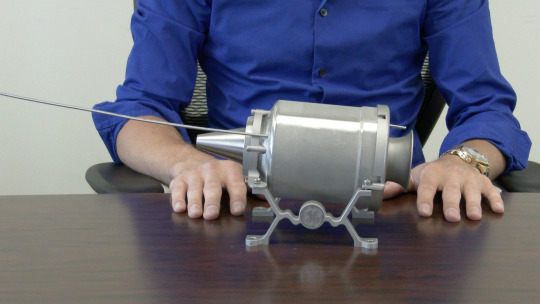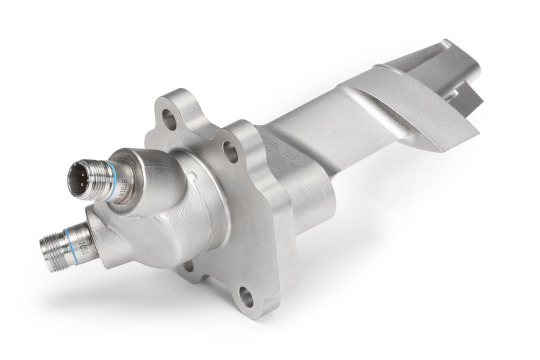GE Aviation Continues to Push Ahead with Additive Manufacturing

This tiny working jet engine model was entirely 3D printed. Courtesy of GE Aviation.
Latest News
May 13, 2015
Different companies have responded to additive manufacturing (AM) in different ways. Some have ignored it completely, figuring the technology has nothing to offer their business. Some have dipped in a toe, metaphorically speaking, using AM to run a few prototypes or to build unusual party favors for VIPs. A growing number of companies, however, are embracing AM and running with it, pushing the boundaries to see what is possible.
GE Aviation is one of the runners. The company is pushing full speed ahead with AM by introducing its use into planes and building plants to improve production volume. The company isn’t afraid to experiment with the technology either, using its own resources. The latest experiment was for the company to build a miniature working jet engine.
 This tiny working jet engine model was entirely 3D printed. Courtesy of GE Aviation.
This tiny working jet engine model was entirely 3D printed. Courtesy of GE Aviation.Surprisingly, GE was kind of beaten to the punch with this project. Monash University recently 3D printed an entire jet engine as well.
Rather than attempting to build a modern jet engine as a test, GE engineers instead redesigned a simpler engine, specifically one used for remote control planes. The result is a small, but functional engine that was able to produce 33,000 rotations per minute.
“We wanted to see if we could build a little engine that runs almost entirely out of additive manufacturing parts,” the engineers said. “This was a fun side project.”
 This sensor is the first 3D printed part to be approved for use by the FAA. Courtesy of GE Aviation.
This sensor is the first 3D printed part to be approved for use by the FAA. Courtesy of GE Aviation.What GE considers a side project, other companies might consider a serious effort. It’s because of that kind of attitude that GE is the first company to receive FAA approval for a 3D printed part inside an airplane. The 3D printed housing is for the T25 sensor, which is located in the inlet to the high-pressure compressor. The sensor provides pressure and temperature measurements for the engine’s control system.
Both the engine and the T25 sensor were built using direct metal laser melting (DMLM), which is a process that melts powdered metals into thin slices of the object the be printed. Once the layers are completed, the part emerges from the powder bed. The process is capable of working with a number of different metals, including alloys, which makes it particularly valuable for aerospace design and manufacturing.
Below you’ll find a video about GE Aviation’s 3D printed jet engine.
Source: GE Reports
Subscribe to our FREE magazine, FREE email newsletters or both!
Latest News
About the Author
John NewmanJohn Newman is a Digital Engineering contributor who focuses on 3D printing. Contact him via [email protected] and read his posts on Rapid Ready Technology.
Follow DE





